Onychomicosis is a fungal nail plate. The disease can be caused by dermatophytes or microsporic mushrooms. Mushrooms negatively affect the bases of construction of the keratin and, gradually eating it, cause changes of deformation.
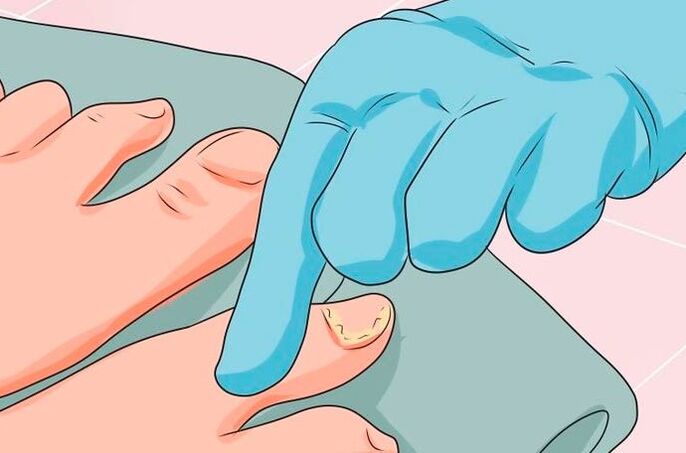
There are the following types of onychomycosis:
- Normorophic. By changing the color of the nail, the appearance of strips and spots.
- Hypertrophic. Not only does the color change occurs, but also a slight deformation. Very often, the nail is deformed by the edges.
- Onicicitico. The nail is destroyed, atrophized and rejected.
The mushroom on the nails of the legs appears not only because of a decrease in immunity. About 70% of people are infected with a sick person and very often I am a relative. The smallest stairs of the skin from feet fall on domestic objects and, in contact with healthy nail or skin fabrics, infect a healthy person.
Very often, the infection occurs through:
- Washcloths.
- Sponges.
- Towels.
- Rugs.
- Shoes.
- Manicure accessories.
When visiting the beach, the sauna and the bathrooms without slippers, there is a high risk of infection with a mushroom of the legs. With high humidity and temperature, the infection occurs much more often.
It is particularly attentive to be in public places where people go barefoot. The mushrooms are resistant to both low and high temperatures and in the sand of the beach maintain their vitality for several months.
Healthy fabrics are gradually influenced by a mushroom. Much depends on the type of pathogen, but some signs allow us to distinguish different main stages of the development of the uicomicosis:
- Normal or initial. There are no pronounced events, at this stage it is difficult to note infection from a mushroom. The nail becomes more opaque, its color can change slightly, small cracks, irregularities on the surface occur. Burn and itching can be heard. This period is easy to confuse with other diseases: psoriasis, changes in the liver. Therefore, to confirm the diagnosis, it is recommended to contact a dermatologist.
- The hypertrophic form rises if measures are not taken in the initial phase. Symptoms are becoming more pronounced. The nail thickens and darkens, the shape of the dish is deformed, crumbles and destroys.
- Atrophic or neglected. It appears when the infection extends to the cuticle, the latter refuses, inflames and swells. The entire surface of the nail plate changes its color, it is completely separated from the bed. The treatment can be ineffective, the nail is not always saved due to its atrophy.
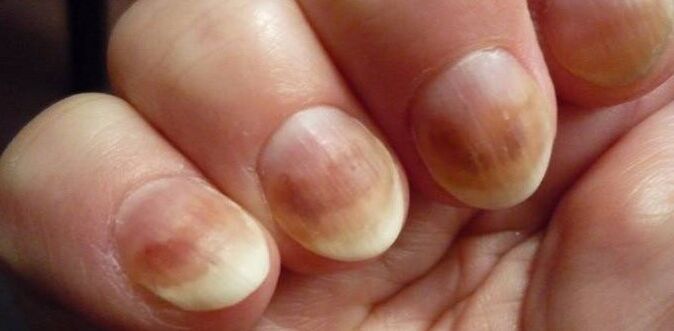
Signs of nail mushrooms:
- The nail plate begins to change the shadow, it becomes opaque. Consequently, it loses a healthy pink color. When the parasitic mushroom on the surface, the nail becomes white or yellowish. So the most often happens on fingers. With other types of damage, the nail can take any shadow: from greenish, black to black.
- Tax or exhaustion of the nail plate - When noting that the thickness of the nail has changed, this is a clear sign of fungal damage. At the same time, the nail plate loses elasticity, becomes rough, hard or vice versa too soft, begins to crumble. The normal thickness of the nail on the fingers does not exceed 0, 5 mm, the nails of the legs up to 1 mm.
- The stratification of the nail plate, its delay behind the surface of the nail bed is a sign of the advanced phase of the disease when the structure of the nail changes. It becomes loose, irregular, covered with furrows.
- A discomfort - Understanding that a mushroom appeared on the nails from unpleasant sensations that accompany this disease. There is a serious itching, sometimes painful.
- An unpleasant smell: this symptom is particularly characteristic of the onyicomicosis on the nails of the toes of the feet. When they start to smell unfortunately, despite the regular conduct of the hygiene procedures, you should see a doctor.
The nail fungus is often accompanied by an extremely unpleasant smell
The general symptoms of the disease are listed above. But in what way in particular the onychomicosis manifests itself depends on the type of mushroom, which impressed the nail plate.
Each variety of mycosis has typical signs:
- Fleet Mushroom - leads to rapid thinning of the nail plate. He breaks, he starts to exfoliate from the nail bed. The shadow of the nail becomes first yellowish, then acquires a brown color. In a neglected shape of the disease, the skin around the nail swells, blushes.
- Treads: parasites to the surface of the nail plate, without penetrating deeper. Thanks to this, this type of disease is easier to treat than the rest. The main sign of the disease is a change in the color of the nail. The shadow can be any: from white, green to gray, black. If the correct treatment is not started timely, the mushroom spreads to other nails and even the skin. There is a serious itching, pain, especially when walking.
- Dermatofita: develops when the nail is influenced by Trichophophyton SPP. , As well as from Epidermophyton SPP and Microsportum spp. The first signs of this disease: spots or strips of gray and yellowish shades form on the nail plate. As the disease advances, their quantity increases and the nail begins to exfoliate.
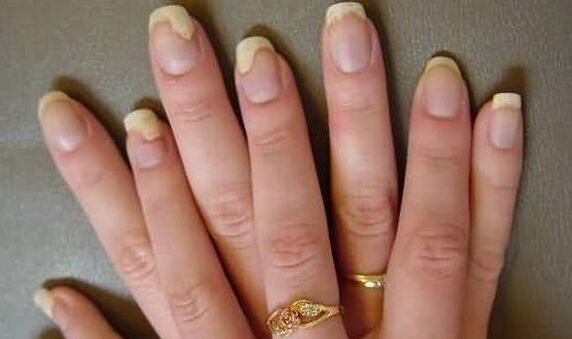
Dermatophyte one of the common forms of nail mushrooms
Knowing what kind of mycosis was affected by the nail very important for the correct treatment. The active components of most drug drugs are designed to destroy a specific type of mushrooms.
The onychomycosis begins with the injury of insignificant parts of the nail, so many people at the beginning do not pay attention to a change of shadow and the formation of points. In the absence of treatment, mycosis spreads quite quickly, affecting all the large areas of the infected nail, moving on to healthy nails and infecting the others.
There are 3 phases of development of the mycosis of the nails:
- The initial phase - proceeds without clearly expressed symptoms, uncomfortable sensations, such as itching, pain, are often absent. Small spots, stripes, intervals that are barely distinguishable on the nail plate. It is easier to notice them on the thumb.
- The second or progressive stage of onychomicosis: the number of points and grooves increases, they become large and already clearly evident. The color of the nail plate changes, fades and begins to deform.
- The advanced phase: the nail plate completely loses the aesthetic appearance, is excessively thick or very fragile. The color of the nail becomes yellow, brown, green, black. Exfolia, there is the risk of complete loss of the nail.
The first signs of the presence of nails mushrooms
First it is possible to detect the onychomicosis, the greater the probability of rapidly getting rid of this disease. With operational therapy with competence, the body suffers in the least, so when the first symptoms of mycosis appear, it is necessary to consult a doctor.
The first signs of nail mycosis appear almost immediately after the infection. If after visiting public places such as a swimming pool, a sauna, a shower in the gym, the beach, the faded nails, they started prudently, so these could be the first signs of onychomycosis.
Healthy nails are practically not susceptible to infections with a mushroom. It begins to develop quickly when only on damaged nails plates.
Popular remedies
There are many popular remedies that will help to treat their nails affected by a mushroom in the initial phase. Take effective, but at the same time simple recipes.
Sometimes ordinary iodine can quickly help to cope with the mushroom
- Iodine: every day until the symptoms disappear, apply 1 drop of iodine 5% to the nails concerned. The procedure is performed in the morning, as well as in the evening. More material on the treatment of iodine.
- 1 teaspoon of iodine, vinegar, glycerol is mixed and diluted with 6 teaspoons of water. The resulting blend for 10 days in a row rubs the nails. The composition on the nail plate must be left during the night.
- Aceto - Prepare a Diluindo Aceto Bath 1 part 9% with 8 parts of hot water. Flying between the legs or arms for 20 minutes. Lead 7 procedures to alternate days. More material on the treatment of vinegar.
- Egg ointment: put a raw chicken egg in the shell in a glass and pour the 9%vinegar at the top. When the shell dissolves, remove the remaining film and mix the egg with the vinegar. The resulting mixture is applied twice a day in the areas interested for 2-3 weeks.
The ointment from the hen eggs is also quite effective against the mycosis of the nails
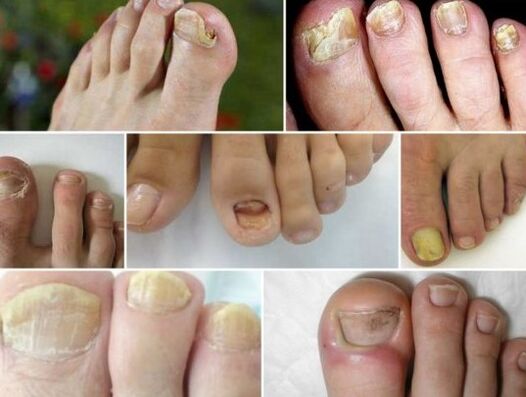
- Hydrogen peroxide - Dilute 2 -liter 2 tablespoons of 3%hydrogen peroxide. To climb your hands or legs, depending on where the mushroom is located for 20 minutes. Repeat the procedure for 7-10 days in a row.
- The peroxide presses - To impregnate a cotton swab with peroxide, attack it to the nails on which there are signs of the mushroom. Before then, the arms or legs must be frightened in the soda bath. To prepare it, 1 teaspoon of soda has diluted in 1 liter of water. The picture at the top is wrapped in cellophane or film and is left for 60 minutes. This is necessary so that peroxide does not evaporate. Repeat the procedure for 10-14 days twice a day.
- Propolis Tincture - Wet a cotton swab in the alcohol tincture of propolis 20% and attach to the affected areas. Keep the lotion while the composition dries. Repeat daily until recovery. 1-2 the procedures are sufficient per day.
- Dust washing - The method is suitable for the treatment of leg nails. It is necessary to dissolve 100 g of washing powder, which contains many alkali, in 2 liters of water. Keep such a bath for 15 minutes. Repeat procedures 10-14 while the symptoms disappear.
- Garlic - Cut a peeled clove of garlic, wet in the salt and then grated the nail plate. Repeat twice a day before the disappearance of symptoms.
- Ammonia - Dilute in 1 glass of water 1 tablespoon of ammonia. The resulting solution is impregnated with cotton fabric. He has to wrap his legs or arms and leave this compress at night. Repeat the procedure for 7 days a day.
- Onions: grind the onion to the consistency of the baby food and attach to the nails interested for 30 minutes. Repeat twice a day before recovery.
Chopped onions will help you return a healthy appearance
- Mix the chamomile, the mint sage, you can take dry or fresh herbs. Put the resulting composition on tiptoe or glove at night. Herbs must be changed every evening. Repeat the procedure in combination with other recipes while the symptoms of the mushroom disappear.
- BORIC ACID - Cotton swabs impregnated with boric acid are applied to pre -steam nails. You have to keep the lotion for 30 minutes. The procedure is repeated 10 days in a row every day.
- Ceinal and tea wood oils: mix these products in an equal proportion, dip the gauze bandage with the resulting composition and apply it on nails for 20 consecutive days for 45 minutes. The recipe is contraindicated in pregnant women.
- Soda - Soda diluted with a small amount of water to the consistency of the baby food. Apply it to the nails for 20 minutes, then rinse with hot water for 10-12 days twice a day.
- Apple cider vinegar: dilute with olive oil. The proportion required is 2 parts of 1 part vinegar. Apply the mixture to the plates for interested nails while the nail is completely growing.
- Tea tree oil: apply a couple of drops of oil on the nails, while the areas of the nail plate affected by the mushroom grow completely.
- Verba - Macina 500 g of sprouts of a young willow, pour 2 liters of water, bring to a boil. From the decoction finished three times a week, do bathrooms for hands or legs for 20 minutes until recovery.
- Nittle - Brew 3 tablespoons of nettles in 400 ml of water. With this decoction, remove the swabs and apply them to the nail plates twice a day before recovery.
- Tan the leaves of the mountain ash and put the nails with a thick layer, then wrap it with a baking movie for 30 minutes. Repeat the procedure daily 12-14 days.
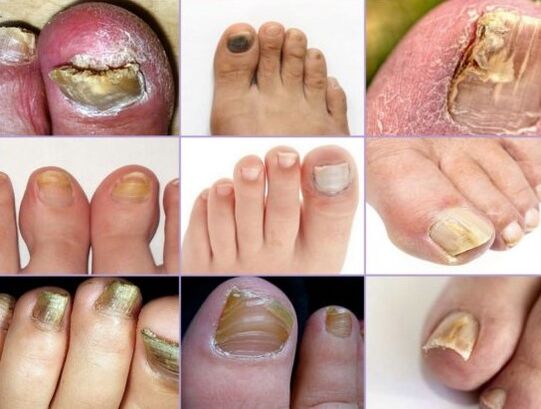
- The mushroom of the skin of the feet.
- Reduce immunity.
- Family members suffering from fungal defeat.
- Elderly.
- Diabetes.
- The presence of microtrauma and coffin.
- Increase in the sweating of the legs.
- Unknown and poor quality shoes.
- The habit of walking barefoot in public places.
- Accommodation and work in a wet climate.
- In the long term wearing artificial nails.
- General health.
- Susceptibility to infection.
- The level of humidity and thermal background.
- The type of nail plate (the fingers on the fingers grow more slowly).
- Distal underwater underwater.
- Lateral onychomycosis.
- Onychomicosis of the white surface.
- Onychomycosis of the proximal tray.
- Onychomicosis total dystrophic.
How can you get an infection with a mushroom?
The infection of nail mycosis can occur everywhere: from the places of public visit to your home. It is transmitted directly by people to people, as well as through objects with which a person suffering from mycosis has contacted. The mushroom penetrates through microcrack, bruises, other damage.
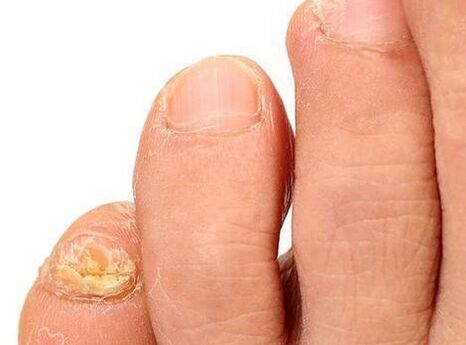
Places where you can be infected with mycosis:
- Public places where people often go barefoot, especially if humidity has increased there. In this microclimate, Mikoz keeps life for a long time. Examples of these institutions are souls in fitness centers, saunas, bathrooms.
- Capestri in shops, sports complexes and other places.
- Halls for manicure - If the teacher does not develop the tools scarcely after making a manicure or pedicure for a person with a mushroom, there is a high probability that the next customer is infected with this disease.
- Visiting and at home - When a person wears clothes, shoes in which the mushroom remained, he uses a towel that had previously used onychomycosis. The mushroom could be on the nails if you walk barefoot on the floor.
- Beach - In the sand on the beach there are always many disputes on the mushrooms. If you walk barefoot, they will penetrate microcrack and diseases cannot be avoided. In addition, you can be infected on the beach through a bed.
- Public transport - through the handrails, to which the patient has touched.
- Buy - As he tried barefoot of the shoes, who previously measured the patient with a nail fungus.
There are great chances of being infected with a nail fungus in public transport
In the places above, you should be extremely clean to avoid infection.


















